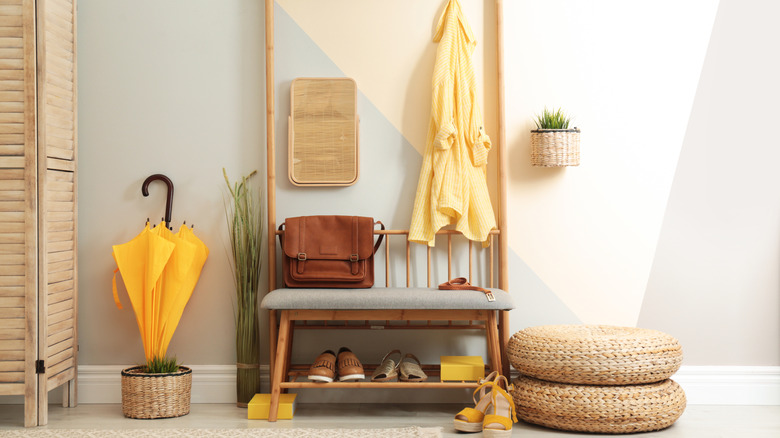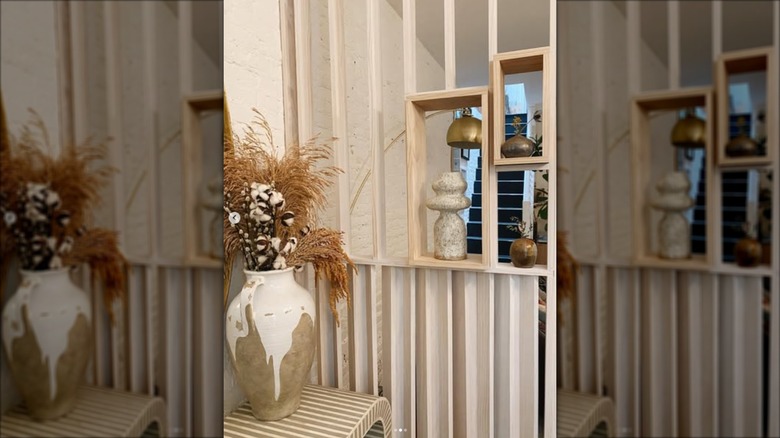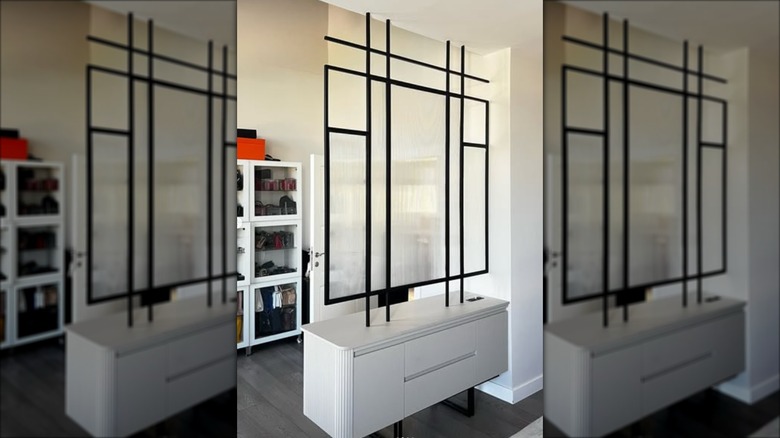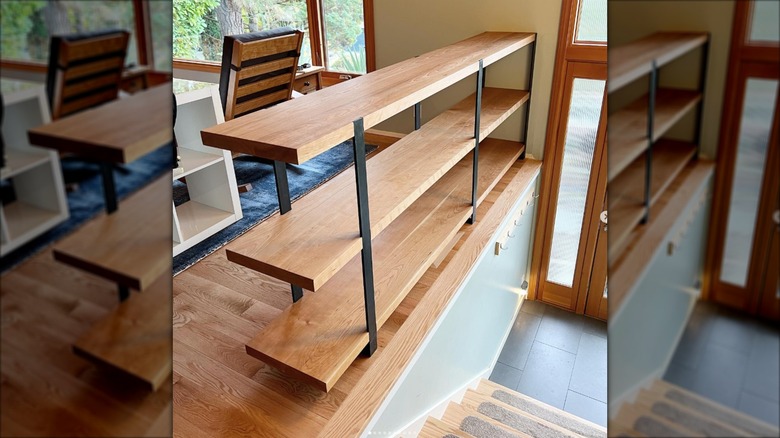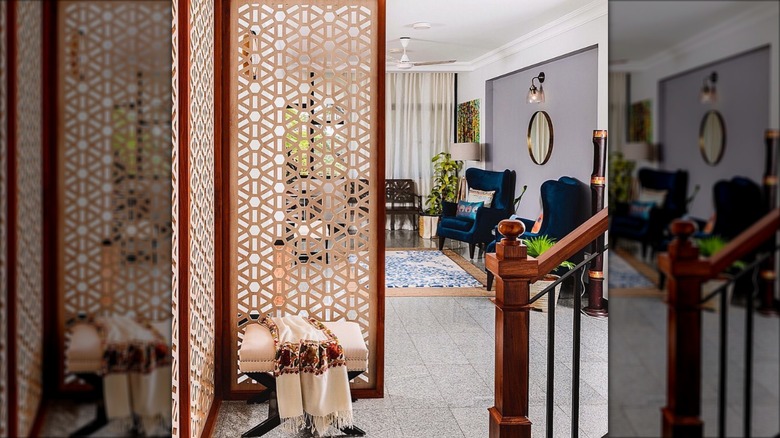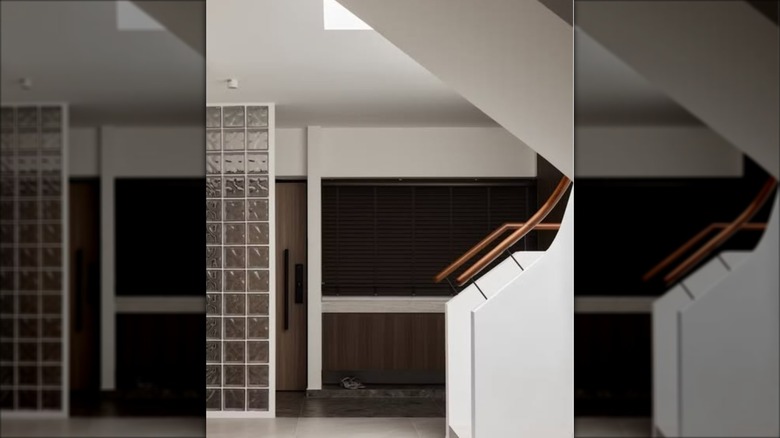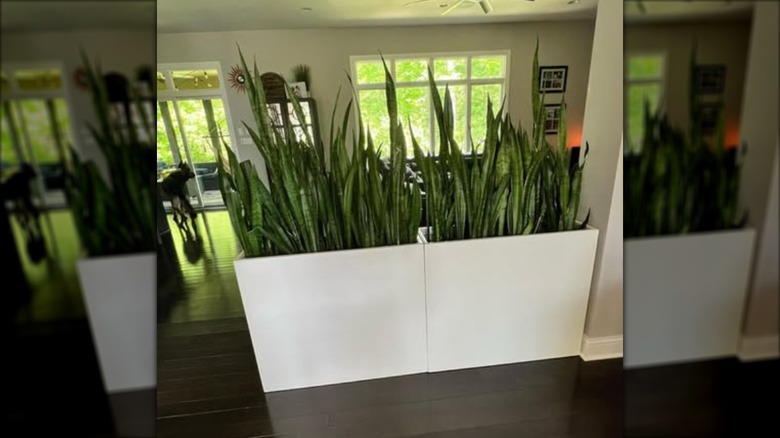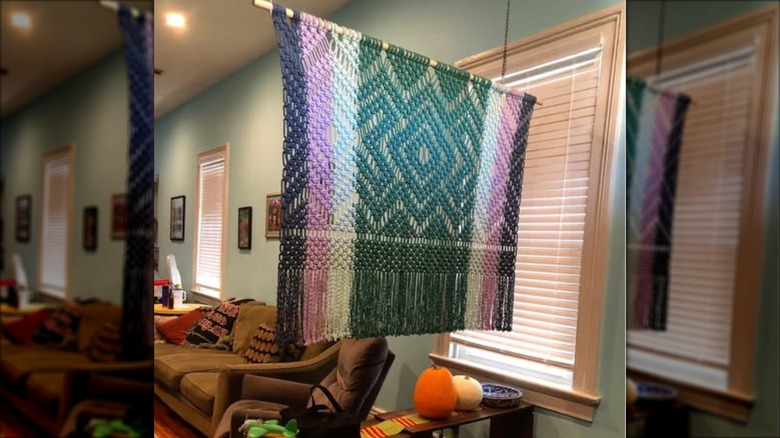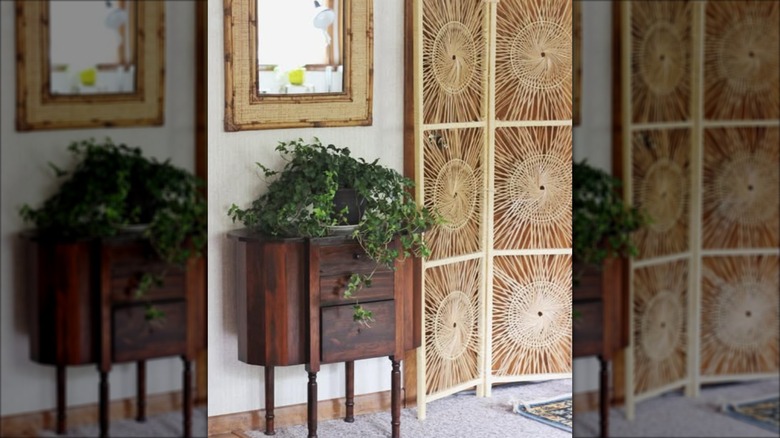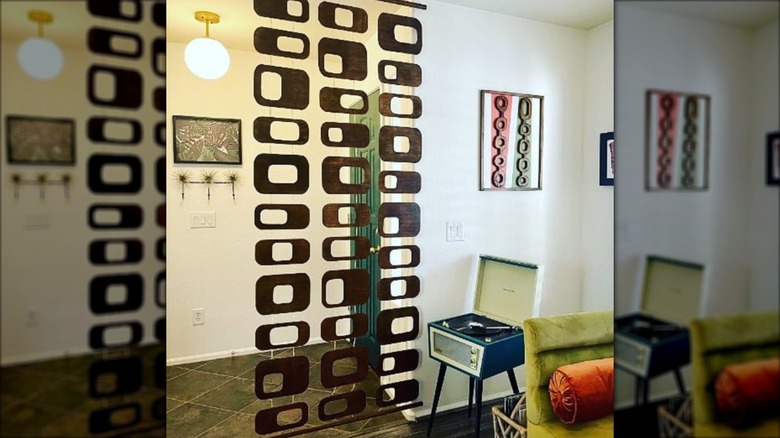9 Ways You Can Use A Partition To Create Privacy For Your Entryway
We may receive a commission on purchases made from links.
Dedicated entryway and foyer spaces are the first place you encounter when entering a home, which means they not only set an impression of what's beyond but can also be great for catching all those things that enter and exit the house, like coats, boots, umbrellas, and more. A well-appointed entry space can help keep other areas less cluttered with proper storage using elements like consoles, hooks, and benches. Smaller homes and apartments, however, can often be without this important area of the home, with many front doors opening right into the general living space. You can, however, create a division between the front door and the rest of your space that grants not only a sense of definition but also privacy. You can easily block views from the open front door with a number of great solutions, including furniture pieces, plants, folding screens, and more.
These strategies are perfect to divide your living room and foyer to create separate spaces, even if you have only a few feet of room around the door. In addition to privacy, they can help create a more enclosed and intentional feel to the spaces that are on either side. Many can also help partially block drafts whenever the door is open while still allowing light into either space from one side to the other.
Wooden accent wall
Creating or installing a wood accent wall can be a great way to define an entryway space. The distance between the slats can be easily adjusted in density and angle to create additional privacy. You can also add additional accents, like box shelves between the slats that hold décor items or a bench at the bottom to sit down on while putting on shoes. This is a sleek and contemporary look and can be made to fit your particular style depending on which variety of wood you use. Build one from scratch from inexpensive lumber or purchase a pre-made one to install, like this WAHHWF Wall Partition Room Divider from Amazon.
2-in-1 Console
A console or bench with an attached screen can be a great way to block off an entryway from the surrounding room. It not only creates privacy and a feeling of enclosure but also gives you a décor display or storage space perfect for keeping shoes and other items tucked away. Many feature a simple glass or plexiglass divider screen above that still allows light through while blocking views.
Bookshelves
Using a bookshelf as a divider between your living and entryway space can not only be helpful in blocking views and breezes but also give you lots of extra shelf space for books or décor. To create your own room divider, opt for a taller bookshelf with cubbies to divide the zones more fully, or use a low bookshelf that creates definition but allows you to see over it. A low bookshelf at the top of a split-level staircase can be a perfect alternative to a traditional railing.
Latticed screen
A latticed screen can be a beautiful way to block off your entryway that also adds additional texture to your spaces. Depending on the style of the screens, these decorative room dividers fit well with a number of different room styles and aesthetics, from a chic, ornate Moroccan-style screen in mahogany to more cottage-style wooden trellises. Metal screens in black, brass, white, and copper are another stylish way to create privacy between these zones, like this Roundhill Furniture Room Divider.
Glass blocks
Glass blocks create a whole lot of vintage-inspired charm while separating views yet still allowing ample light into either side of the partition. You can purchase a kit from Quality Glass Block and Window with everything you need and the plans to build your own glass block wall, or you can buy individual Nubio Glass Blocks to install with Quickrete Glass Block Mortar.
Plants
There are numerous ways to use plants as a room divider between your entryway and other spaces, including using large planters with tall trees, plants, or indoor bushes to block off the space. Outdoor planters work exceptionally well for this approach, like this GSK Metal Planter Black Galvanized Steel Box. You could also create a wall of hanging or wind plants through a trellis or mesh room divider. You could also creatively hang free-floating shelves from the ceiling and fill them with plants.
Hanging textiles
Woven textiles are a soft and textured way to define an entryway. Just hand them from a metal rod or wooden dowel from the ceiling. This technique not only adds privacy but can also help eliminate drafts from the door coming into the rest of the living space. Use a macrame curtain for a boho look, or opt for a thick woven textile featuring artwork or a pretty design. Hanging the piece from the ceiling gives you coverage and keeps everything off the floor, meaning it's perfect if your entryway is small and space is tight.
Woven folding screen
Woven screens are an easy way to create division between zones in your home. These lightweight screens can be moved as needed and provide a neutral look that accommodates numerous design styles, including cottage, boho, and coastal style spaces. Many natural-material screens are available from Amazon, including this simple folding JVVMNJLK Bamboo Room Divider that blocks views entirely or this boho-chic rounded Aletheiawu 4-Panel Room Divider.
Hanging dividers
Another fun room divider strategy for smaller spaces is using a hanging divider, which comes in a host of different designs and materials, including wood, fiberboard, plastic, and metal. Fun options include this colorful felt OSHIYINN Store Flying Venus Hanging Room Divider or these wood WAHHWF Hanging Room Divider Panels that you can assemble together to create an entryway wall. You can also buy panels individually to increase the size of the wall.
